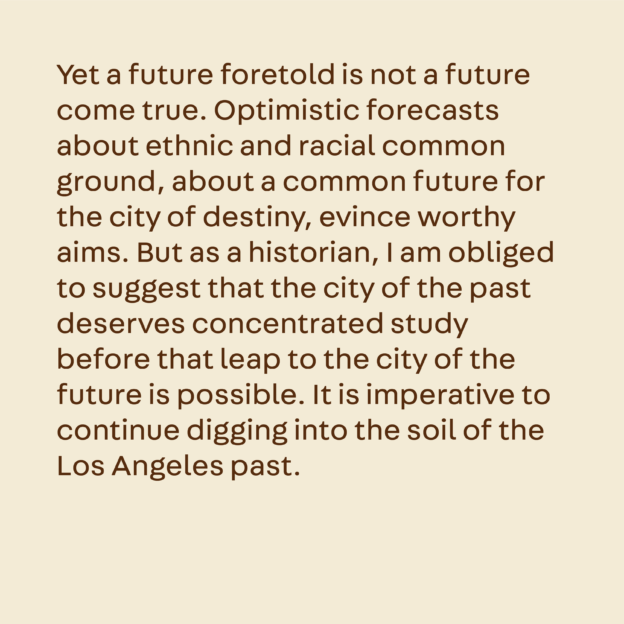From Whitewashed Adobe: The Rise of Los Angeles and the Remaking of Its Mexican Past (Berkeley: University of California Press, 2004).
Yet a future foretold is not a future come true. Optimistic forecasts about ethnic and racial common ground, about a common future for the city of destiny, evince worthy aims. But as a historian, I am obliged to suggest that the city of the past deserves concentrated study before that leap to the city of the future is possible. It is imperative to continue digging into the soil of the Los Angeles past. What we find is a city that, even in its expressions of institutional and infrastructural growth, adhered to patterns of racial privilege and ethnocentrism. Pronouncements about a multicultural future that works may only be so many naive words and empty phrases. Or they may be lies, deliberate ones at that. We should be suspicious of the elasticity of language to defy the concrete reality of social problems. In other words, it was not at all that long ago that similar language and optimism promised a very different Los Angeles of the future. Los Angeles was once to be the world’s urban beacon because racial supremacy worked here, because Anglo Saxons in charge worked so diligently to maintain particular lines of racial and ethnic privilege. If latter-day suggestions of racial and ethnic harmony in the future are to prove at all feasible, it seems to me important that we better understand the former expression of racial singularity and supremacist triumphalism. Wrestling with memory and history in this way just might be socially therapeutic. It certainly is overdue.
